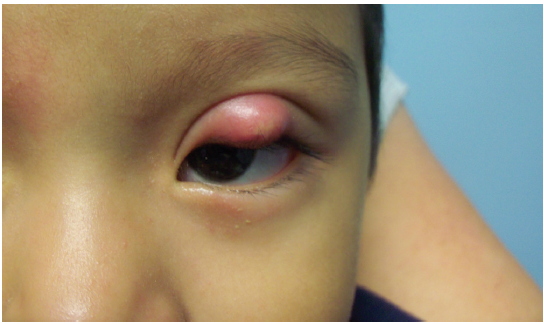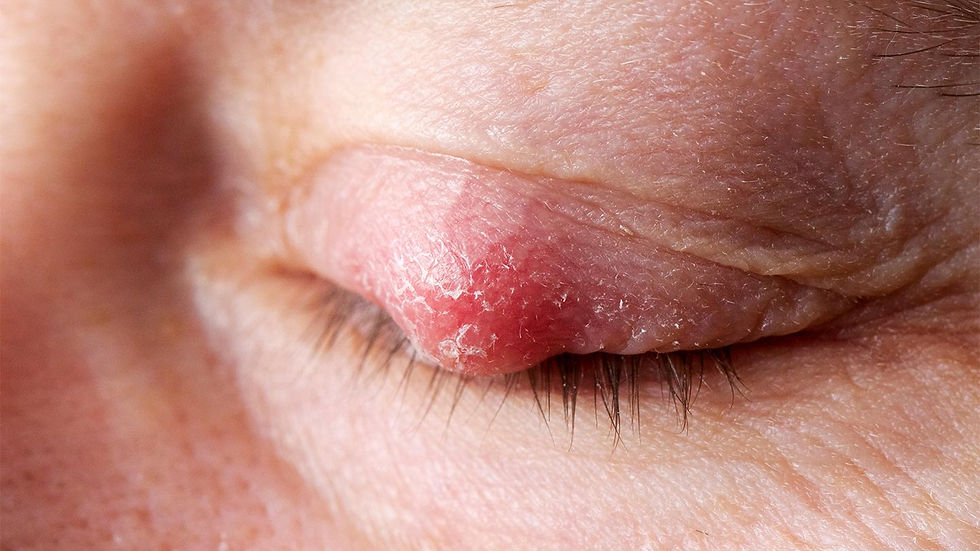Specialist Ophthalmologist
B.Sc. (UOFS), B.OPTOM. (UNIN), F.O.A. (S.A.), MB. ChB. (Stell), F.C. OPHTH. (S.A.), M. MED. OPHTH. (Stell)
Chalazion
Stye or Chalazion?
The best way to tell the difference between a stye and a chalazion is to notice where the bump is.
A stye usually forms along the outer rim of the eyelid, though sometimes it can form on the inner rim. A stye can cause the eyelid to become swollen, even torn. It’s also very tender to the touch and usually is red and irritated.
If the bump is on the underside of the eyelid, or behind the eyelashes, or midway up the eyelid, it’s probably a chalazion.This type of bump is more likely to form on the upper eyelid.



Other differences between a stye and a chalazion:
-
a chalazion can grow larger than a stye, as big as a pea. It can get big enough to blur your vision.
-
a chalazion is more likely to return.
-
A stye often hurts, and a chalazion usually doesn’t.
-
Adults tend to develop styes and chalazia more often than children, but anybody can get one.
Causes
-
A stye usually stems from a bacterial infection that causes a blocked eyelid oil gland or clogged eyelash follicle.
-
Stress and hormonal changes also can bring on a stye.
-
A chalazion happens when a tiny part of the eyelid called a meibomian gland becomes blocked.
-
Blepharitis, which is a condition that causes the eyelids to become inflamed, often is linked to styes and chalazia. So is rosacea, a skin condition.
-
Skin cancer also can cause styes and chalazia, though this is rare.
-
Also, a stye left untreated can sometimes turn into a chalazion.
There are some things you can do to lower the odds that you’ll get a stye or chalazion:
-
Take off eye makeup before you go to bed.
-
Disinfect your contact lenses.
-
Wash your hands before putting in your contacts or touching your eyes.
Treatment
Usually, you can treat styes and chalazia yourself, without a trip to the doctor. They usually clear up in a few weeks on their own, but there are ways you can help to move the process along:
-
First, never poke, squeeze or try to pop a stye or a chalazion. This could cause a more serious problem.
-
Place a warm, folded cloth on your eye several times a day.Massage the swollen area gently to help drain the clogged gland. Remember: gently.
-
Once the sore drains, keep the area clean and keep your hands away from your eyes.
-
Go without eye makeup or contact lenses until the eyelid has healed. (Your contacts may contain bacteria that caused the infection).
-
Clean your lenses before using them again, along any contact lens accessories you’ve used.
When to See Your Doctor
If you have a very large, painful stye or chalazion that doesn’t go away, you should see an eye doctor. He may prescribe an antibiotic to put on the bump to help clear it up.
In the worst cases, the doctor can drain the bump and prescribe antibiotics or a steroid injection to help it heal.
Some symptoms could mean the problem is more serious and you should see your doctor:
-
The sore doesn’t get better after you treat it at home.
-
It comes back.
-
It looks like something other than a stye or chalazion.
Your doctor may need to do a biopsy or other tests to see if skin cancer is the problem. Again, this is rarely the case.